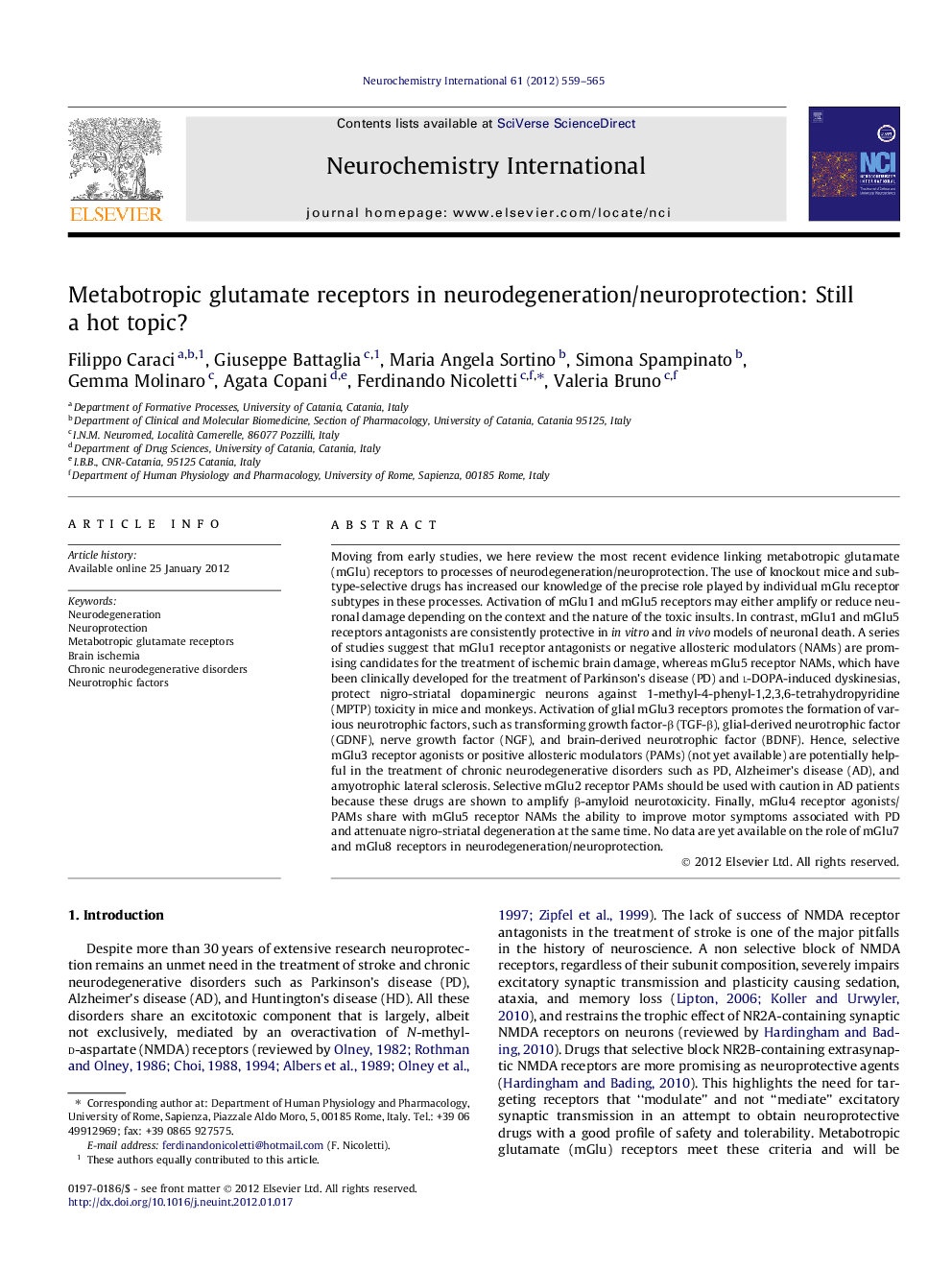| کد مقاله | کد نشریه | سال انتشار | مقاله انگلیسی | نسخه تمام متن |
|---|---|---|---|---|
| 2200856 | 1099981 | 2012 | 7 صفحه PDF | دانلود رایگان |

Moving from early studies, we here review the most recent evidence linking metabotropic glutamate (mGlu) receptors to processes of neurodegeneration/neuroprotection. The use of knockout mice and subtype-selective drugs has increased our knowledge of the precise role played by individual mGlu receptor subtypes in these processes. Activation of mGlu1 and mGlu5 receptors may either amplify or reduce neuronal damage depending on the context and the nature of the toxic insults. In contrast, mGlu1 and mGlu5 receptors antagonists are consistently protective in in vitro and in vivo models of neuronal death. A series of studies suggest that mGlu1 receptor antagonists or negative allosteric modulators (NAMs) are promising candidates for the treatment of ischemic brain damage, whereas mGlu5 receptor NAMs, which have been clinically developed for the treatment of Parkinson’s disease (PD) and l-DOPA-induced dyskinesias, protect nigro-striatal dopaminergic neurons against 1-methyl-4-phenyl-1,2,3,6-tetrahydropyridine (MPTP) toxicity in mice and monkeys. Activation of glial mGlu3 receptors promotes the formation of various neurotrophic factors, such as transforming growth factor-β (TGF-β), glial-derived neurotrophic factor (GDNF), nerve growth factor (NGF), and brain-derived neurotrophic factor (BDNF). Hence, selective mGlu3 receptor agonists or positive allosteric modulators (PAMs) (not yet available) are potentially helpful in the treatment of chronic neurodegenerative disorders such as PD, Alzheimer’s disease (AD), and amyotrophic lateral sclerosis. Selective mGlu2 receptor PAMs should be used with caution in AD patients because these drugs are shown to amplify β-amyloid neurotoxicity. Finally, mGlu4 receptor agonists/PAMs share with mGlu5 receptor NAMs the ability to improve motor symptoms associated with PD and attenuate nigro-striatal degeneration at the same time. No data are yet available on the role of mGlu7 and mGlu8 receptors in neurodegeneration/neuroprotection.
► We examine the role of mGlu receptor subtypes in neurodegeneration/neuroprotection.
► mGlu5 receptor NAMs are potential neuroprotective agents for the treatment of PD.
► mGlu4 receptor PAMs are promising candidates for neuroprotective strategies in PD.
► mGlu3 receptor PAMs are potentially helpful in the treatment of PD, AD, and ALS.
► Selective mGlu2 receptor PAMs should be used with caution in AD.
Journal: Neurochemistry International - Volume 61, Issue 4, September 2012, Pages 559–565